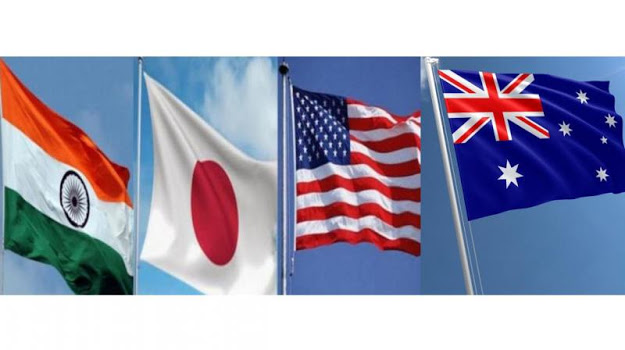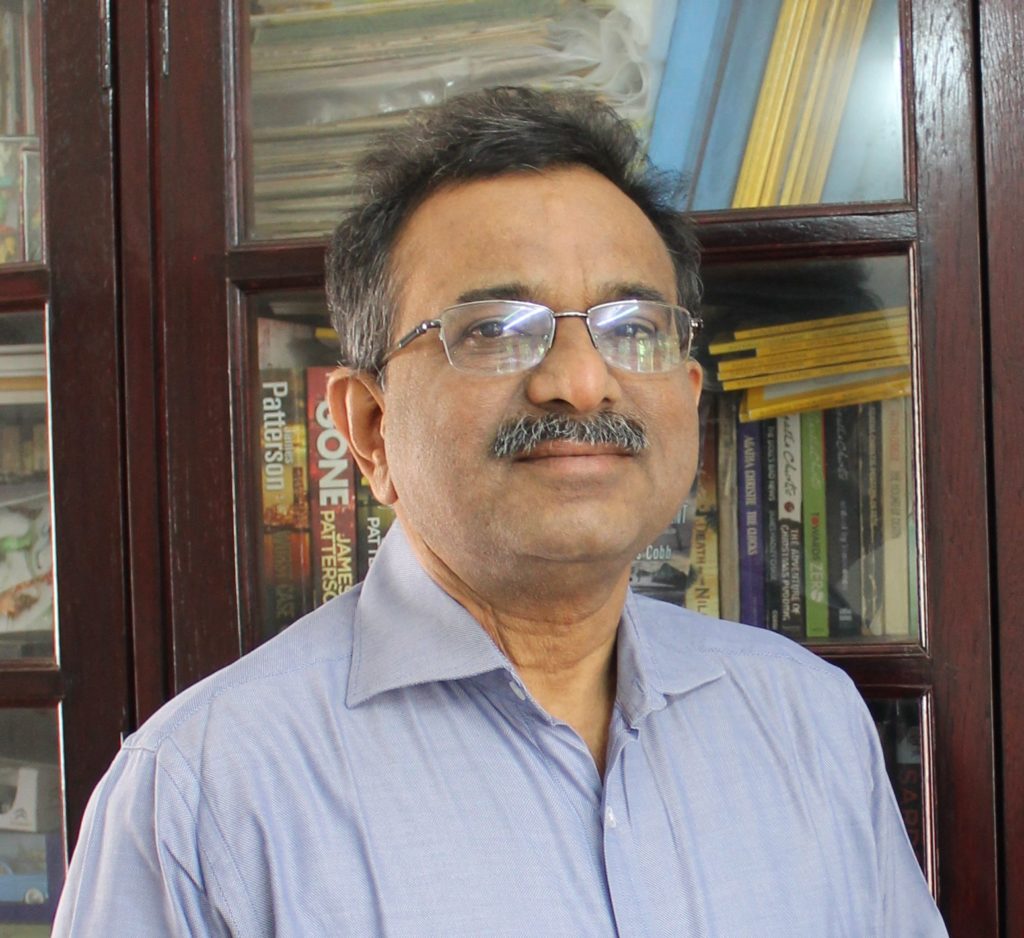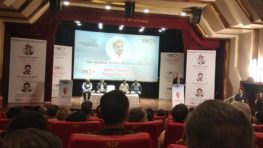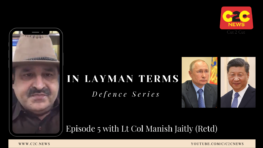
The first world war lasted from 1914 to 1918 and the generation between the ages of 30 to 40 in 1918 would be about 59 to 69 years of age in 1947 in high positions in government and industry or retired.
The second world war lasted from 1939 to 1945. The above referred generation would have been between 51 and 61 years of age when world war 2 started. This entire generation even if not in active combat in WW2 would still have an influence in the thinking including on how their children looked at life.
The generation aged between 30 and 40 when WW2 got over was hardly 32 to 42 years old in 1947, were ready to lead their countries in various capacities in government and industry. This generation likely shaped in attitudes to life by their parents who had seen WW1 and having themselves seen the WW2 would shape their own children’s attitudes to life.
As an aside it is worth noting here that India by and large did not see the actual war and destruction. Though around 2.5 Million Indians fought in the WW2 for the allies led by Britain, about 87,000 died. Indians by and large did not get to touch and feel the horrors of war and destruction. USA again did not see active fighting or destruction within USA except for what happened in Pearl Harbour. But the Americans lost around 416,000 people.
This reference is to the fact that India attained independence in 1947 after a nonviolent movement. The real death toll and tragedy in terms of sheer numbers was on attaining independence when the partition riots broke out. The number of dead vary from 200,000 to 2 Million with 14 million displaced and having to start a new life.
The point is that in 1947 the world was looking at life in an idealistic fashion. Everybody had seen death, horror, tragedy, and there was idealism in purpose across the globe. Whether victor or vanquished the economy and infrastructure of most countries had been ruined and every human was striving to rebuild a new life. India even if affected had not seen widespread destruction.
In such a global milieu India chose to walk certain paths economically, politically, militarily, socially, and in foreign policy. If one were to place oneself in 1947, rather than judge in hindsight, most of the decisions taken find understanding.
Economic – India took the socialistic path, understandably so, but soon the colonial British masters were replaced by the brown sahibs and over time this decision was a disaster till 1991 happened.
Politically – Nehru who had a profound influence politically, led India as PM for 17 years and ensured that basic democratic values were not taken away even if nepotism was rampant with his family taking over all power. That no political leader/party sought to build an alternative is the disappointment.
Military – Here the country erred badly. It never looked at military power as crucial to nation building. The idealism that swept the globe was taken to impractical heights in India till 1962 happened.
Socially – Just free from British rule, the people of India continued to maintain relationships with the west and increased this connect. Be it an Ambedkar or a Tata, Birla the dream destination for education, knowledge and immigration was the west – Britain, USA, France etc. even as we professed socialism akin to Russia and China. Right from 1947 almost anything Indians did in terms of education, technology, family friendships, immigration it was with USA and other western nations but rarely with Russia, China.
Foreign Policy – This is where the real conundrum starts. The founding fathers preferred socialism, but never embraced either Russia or China till 1970 when Indira signed a treaty with Russia. For all their socialistic preaching, leaders like Nehru enjoyed the western life. India and Indians wanted to be like the western world but too proud to accept this and instead spoke various buzzwords and showed alignment with the Russians, PLO, Fidel Castro etc. rather openly but officially toed the line of “Non Alignment”.

India signed a treaty of friendship with Russia showing some level of alignment before the 1971 war because it was then obvious that India would go to war with Pakistan and USA wasn’t exactly friendly towards India. Further in a mutual political benefit Nixon of USA and Mao of China were getting warm towards each other and Nixon hated Mrs. Indira Gandhi then PM of India.
Gorbachev, Perestroika, the break up of the USSR, the end of the cold war all resulted in a situation where Russia changed its own foreign policies. It started looking at issues from a different prism. Even if Russia had issues with USA, they started collaborating on space technology. The old bipolar world was no longer there, and most countries were recalibrating their foreign policy. 9/11 changed USA attitudes towards terror and India.
India till then dependent on Russian armaments did change by having to source USA military technology given that Indian Infotech had huge business interests in USA. The only big change in Indian foreign policy that occurred was the relations with Israel.
Mahatma who agreed to divide India on religious grounds refused to accept the creation of Israel on religious terms. It was only in 1999 under Vajpayee that India started relations with Israel officially. Even though India perforce recognised Israel in 1950 the Indian Govt under Nehru and all other PM’s subsequently never pursued a relationship with Israel for fear of offending Muslims in India and globally. So much for non-alignment and secularism.
The bottom line is that Indian foreign policy since 1947 soon became the Nehruvian policy and a holy cow. With India growing economically it adapted a big brother attitude towards all neighbours without either having the money or muscle power. While most neighbours toed the Indian line, deep within the anger, frustration has remained.
The long and short of this has been that India has many friends but no friends. Real friendship is when you are in a battle – who will stand alongside you, behind you? India lets face it has nobody. Even if there are countries willing to hold hands we do not agree – the old Nehruvian policy refuses to go away. All other countries make sympathetic noises, will help in diplomacy but nobody will act as a deterrent.
We can continue to be in an illusion that economically and militarily we are so strong that we can take on both China and Pakistan together even assuming there is no threat of things going nuclear. While nobody doubts the ability of the Indian armed forces to hold their own against either country in a conventional war, fact of the matter is that the all numbers don’t favour India.
Between China and Pakistan, they have 2.6 million active personnel and 1 million in reserve. India has 1.2 million active and 1 million in reserves. In terms of military hardware India is way down compared to both thanks to 3 decades of neglect. India will have to protect itself right from Arunachal Pradesh to Rajasthan and move men, material across this wide area. Consequently, its not about who will stand alongside India and shed blood, its about who will add to these statistics and act as a deterrent.
For a minute imagine that at this point a joint force of USA, Australia and Japan were to conduct defence exercises in the Rajasthan deserts or in Arunachal Pradesh on their own the message this would send to China.
While solutions and implementation are not easy fact is that India needs to have a complete relook at its foreign policy. Firstly, nobody globally will align with India on border issues. These are usually private problems. However economic and cultural issues bring different countries together. Hence our foreign policy needs to be looked at from 2 broad levels.
One with the big powers of the globe and the other with the neighbours. India needs to shed its diffidence and align/create more robust relationships with the big powers and junk this so-called nonaligned policy officially. Given that the group led by USA is what would culturally and as a society match with India, that should be the way to go. The only challenge would be to handle relations with the Russians and that am confident our mandarins can manage.
The second is the neighbours and the border issues. I think it is time to press the reset button on all neighbours. If today China threatens us through Pakistan, Nepal, Sri Lanka, Bangladesh there is no point in thinking that only some borders are a threat and the others secure. Indian defence strategy should be to protect all borders. India should no longer behave like the big brother but treat each neighbour as an equal and there should be no free lunch to anyone except Bhutan. This highest bidder game that these countries play needs to end.

India must pursue the Quad strategy which can cover over time other smaller south Asian countries like Vietnam, Philippines and create a new “NATO” for the Asian region. Let Indian forces be stationed in Vietnam or Japan even as American forces be stationed in India. Let us face facts for once and be proactive. China is seeking hegemony and wants all other Asian neighbours to be its vassals and never brothers. India will need decades to match up to China economically and influence the world and that is a time we do not have.
Finally, the only option to gain power is to become economically strong and for that we need not just wide-ranging economic reforms but also foreign policy reforms – here and now.

Author: Ravindra Vasisht can be reached on Twitter: @rvasisht
Credit and Source: Republished with permission from Author
https://rvasisht.blogspot.com/2020/07/indian-foreign-policy-time-to-press.html
Picture Credit: Business Standard




